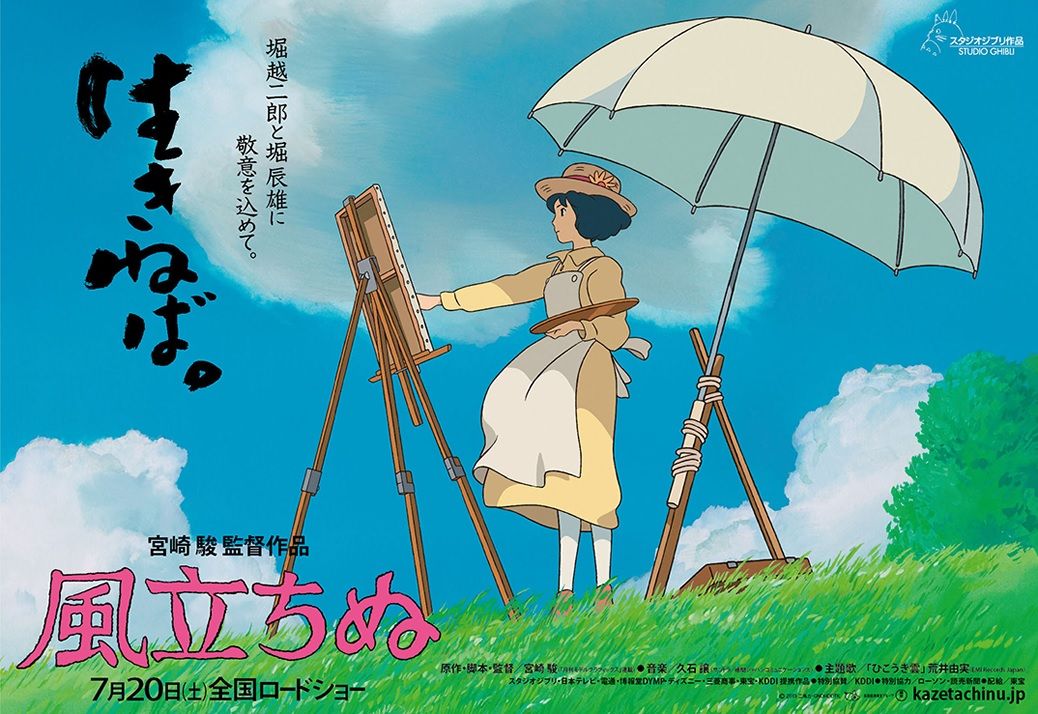
Famed animation director and Studio Ghibli co-founder Hayao Miyazaki makes a charming return to North American screens this month with the TIFF premiere of his film The Wind Rises. Loosely based on the life of Jiro Horikoshi, a man obsessed with his passion for flight – The Wind Rises takes the viewer on a serene and dreamlike journey that spans decades of Horikoshi’s life, and follows his accomplishments as an aeronautical engineer in the early 20th century.
Everything from the dialogue all the way to the style of animation contributes to the overall cheery façade of the film. However, a darker undertone is present in the plot. Jiro Horikoshi is best known as the engineer who designed the Mitsubishi A6M Zero, the fighter plane used in WWII and the attack on Pearl Harbor. The fact that the planes are to be used for war is lightly touched upon, yet overshadowed by Horikoshi’s wish to contribute to the experience of human flight.
Miyazaki’s inspiration to make this film was that he had heard that Horikoshi had once murmured, “All I wanted to do was to make something beautiful,” in context to his planes. The director then knew that Horikoshi was undoubtedly the right subject for his film.
The protagonist of The Wind Rises also comes face to face with other problematic situations of the period: the Kanto earthquake of 1923, depression and poverty, and the war torn nature of Japan and run ins with the secret police. One that hits closest to home for Hirokoshi’s character is when someone close to him is struck with tuberculosis during an era that was ill-equipped to deal with the disease. He takes note of the evils of the world around him and often performs acts of heroism that are either well met or ignored completely.
He saves a girl from a train during the earthquake, but later on is met with cynicism and rejection when he offers food to hungry children on the street. A colleague of his notes that in such times the government has plenty of money for weapons and their planes, but none to feed the poor.
Although the difficulties of Japan are an overarching and controversial part of the plot, it must once again be noted that they do not take centre stage. Jiro Horikoshi is presented as only human, and despite his successes and failures, he continues to very much live in his own head and his own dream world. Although the world around him changes over the years, his dream does not; it is constantly filled with images of planes and flight. He is often visited by his idol Gianni Caproni, who designed the first Italian aircraft, who claims that he too lives in the same dream. The film gains its fantasy nature from Jiro’s dreams, which are only disturbed once by something other than planes and aeronautical engineers towards the pinnacle point of the film.
The beauty of the real world is captured in animation in a way only Studio Ghibli seems capable of; it is enhanced by tenfold by the fantasies of Hirokoshi. The film soars over beautiful and vast landscapes, whether by the view of planes or trains and so forth. It sends viewers through Hirokoshi’s life as well; the audience travels briskly from one beautiful scene to the next, and it often takes a few minutes to figure out whether two or 10 years have passed. Although the pacing is unusual, it suits the film well. This fictionalized biopic plays like an old man recounting his life – quickly skimming over the atrocities and excitedly regaling the tales of things that meant the most to him, however large or small. It creates a pleasant picture of his life that leaves some things to imagination and speculation.
Pleasant, airy, cheerful – all words that have been used to describe this picture. But action packed? No. Exciting? At times, it is thrilling to see the planes take off and characters succeed in their plans, but overall, The Wind Rises is a very smooth journey without too many bumps along the way.
Like other Miyazaki films, such as My Neighbour Totoro or Spirited Away, there is not one distinct villainous character. There are flawed characters, bordering on “bad guy” status, but overall it is the world the protagonist must come to terms with. Audiences used action packed animated blockbusters may feel uncomfortable or even bored with this concept. Many North American viewers may be used to the idea that animated films are for children, and while many are, films like The Wind Rises most likely will not appeal to young movie-going patrons. One may want to prepare for this film by watching other renowned Ghibli films first, such as the two previously mentioned. Then, when you are ready, sit down with an open mind and take a crack at The Wind Rises. It is sure to leave you with a small smile and a single tear rolling down your face.
Le vent se lève, il faut tenter de vivre!
The wind is rising! We must try to live!
Ashlee Mitchell
Video Editor


